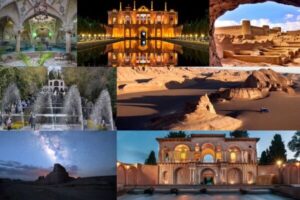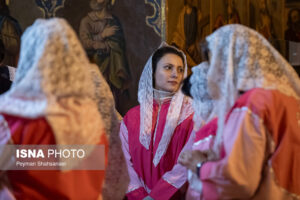Home to seven UNESCO World Heritage Sites, eye-catching gardens, and ancient monuments, the city of Kerman can be considered a living museum, illustrating various eras of Iranian history.
Located in southeastern Iran, Kerman Province is bordered by Fars to the west, Yazd to the north, South Khorasan to the northeast, Sistan and Baluchestan to the east, and Hormozgan to the south. It also includes the southern part of Iran’s central desert, the Lut Desert.
With an area exceeding 180,000 square kilometers, Kerman is one of Iran’s largest provinces. It features diverse climates including warm, semi-arid, extremely dry, temperate, and cold regions.
Here in Kerman, the inhabitants face the harsh desert with patient smiles. Each monument in Kerman reflects a chapter in the people’s historical life, making the city a vibrant museum of Iran’s diverse past.
Numerous stone and pottery artifacts dating back to the 5th millennium BC have been unearthed from the hills and plains of this region, indicating its ancient civilization.
Kerman is home to a wide array of historical sites, gardens, and scenic landscapes such as the Sartasari Bazaar, Vakil Bathhouse, Fath-Abad Garden, Shahzadeh Garden, the Kaluts of the Lut Desert, the Bam Citadel, and more.
Tourist Attractions in Kerman:
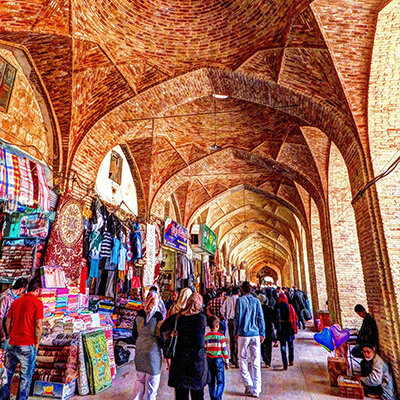
Sartasari Bazaar
Kerman’s magnificent Sartasari (“end-to-end”) Bazaar is one of the oldest and most memorable trading centers in Iran, second only to the UNESCO-listed Bazaar in Tabriz.
Within its alleys lie several museums, bathhouses, and religious structures. The liveliness of this market, especially in the morning and late afternoon, captivates visitors for hours.
Vakil bathhouse
Public bathhouses played a significant role in ancient Iran, often located in central, urban areas. Vakil Bath, situated in the middle of Vakil Bazaar, was built around 170 years ago during the Qajar period, inspired by the Ganjali Khan Bath.
An inscription inside the bath indicates it was commissioned by the local ruler of Kerman. The bath is adorned with stunning tile and ceramic work created by Kerman’s skilled artisans. Today, it serves as a traditional teahouse open to visitors.
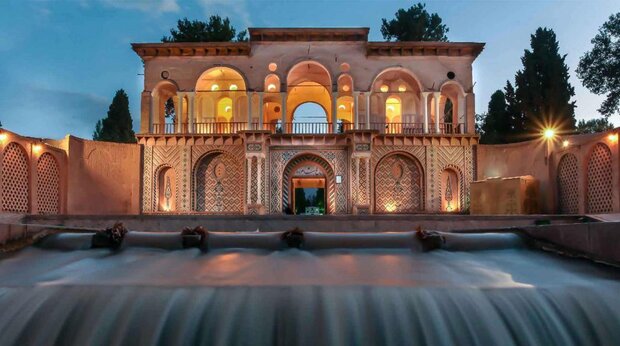
Shahzadeh (Shazdeh) Garden
Shazdeh Garden (meaning “Prince Garden”) is a lush oasis in the heart of the desert near Mahan. Designed in a rectangular layout, it dates back to the late Qajar period, built by order of the ruler of Kerman and Sistan.
Like other grand Persian gardens such as Eram and Dowlatabad, Shazdeh Garden is a UNESCO World Heritage site.
The contrast of its lush greenery against the dry desert creates an extraordinary scene. The garden’s pools, tree-lined pathways, fragrant flowers, and elegant pavilion exemplify the sophistication of Persian garden design.
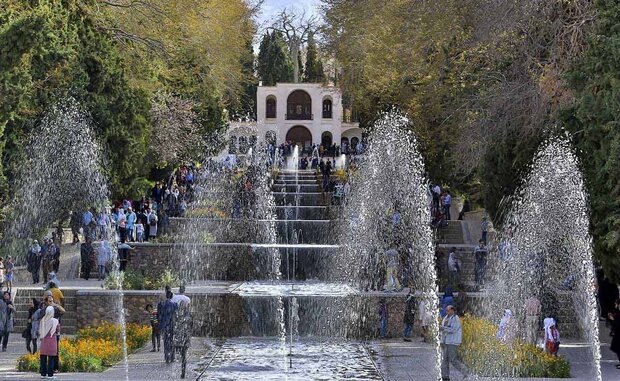
Fath-Abad Garden
Surrounded by pistachio groves, Fath-Abad Garden is particularly stunning at sunset when its lighting creates an enchanting atmosphere.
Also known as Biglarbeigi Garden, it is located in the Ekhtiarabad district and is said to have inspired the design of Shazdeh Garden. It was built in 1803 by Fazlali Khan Biglarbeigi during the reign of Mohammad Shah Qajar.
The garden spans 13 hectares and was listed as a national heritage site in 2002.
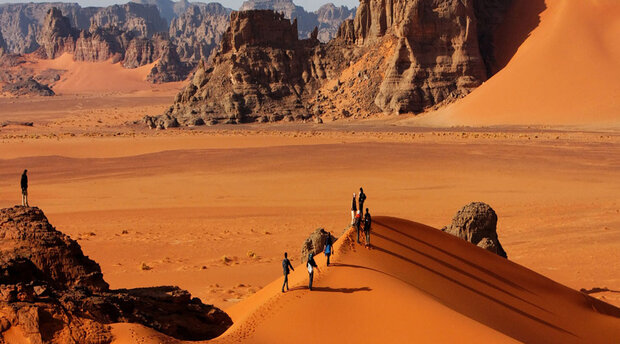
Lut Desert (Dasht-e Lut)
Spanning parts of Kerman, South Khorasan, and Sistan and Baluchestan, the Lut Desert is one of the hottest and driest places on Earth. About 70% of it lies in Kerman Province.
The word Lut in the Baluchi language means “naked, waterless, thirsty, and empty.”
Its night skies are a haven for astronomers and photographers, offering some of the clearest views of the stars due to the lack of light pollution.
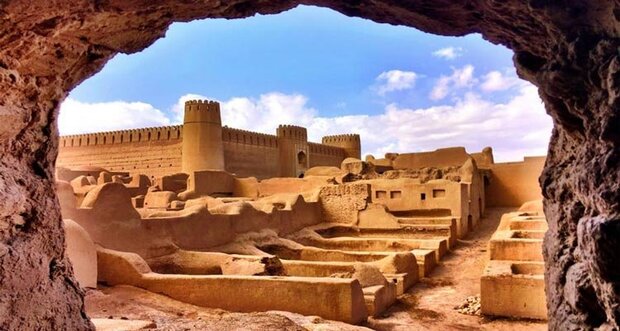
Bam Citadel
The UNESCO-listed Bam and its Cultural Landscape lie on the southern edge of the Iranian plateau in Kerman Province, near the border with Pakistan.
The citadel’s origins trace back to the Achaemenid period (6th–4th centuries BC) and even earlier.
The ancient city of Bam was protected by a massive fortress with deep defensive ditches.
Sadly, a devastating earthquake on December 26, 2003, nearly destroyed the structure. Reconstruction efforts have since been underway to restore this architectural gem.


